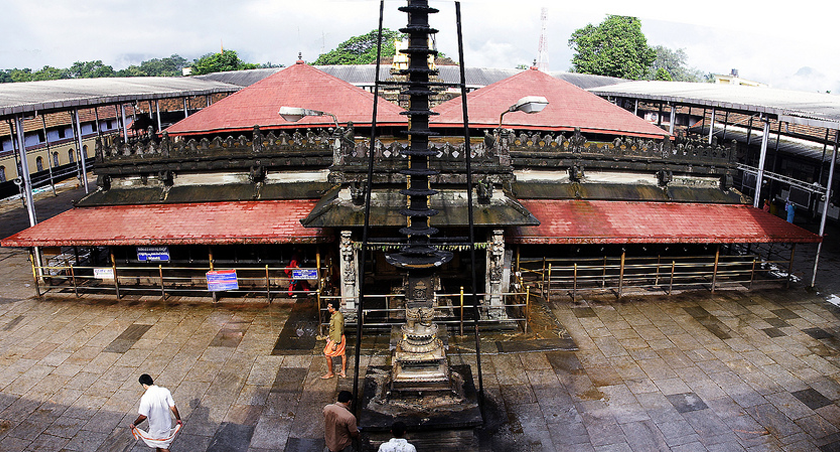March 27, 2024
Mookambika; The Divine Incarnation of Goddess Parvati


Jyothis residency
NO - 27/5, Beside Sri
Mookambika Temple, Kollur,
Udupi Dist, Karnataka
In the records of Mookambika temple history, this sacred place stands out as the sole temple dedicated to the revered Goddess Parvathi. The credit for the creation of this divine sanctuary is attributed to Parashurama, a significant figure in Hindu mythology. The allure of this temple extends far beyond the boundaries of Karnataka, with the people of Tamil Nadu showing a particular fascination for its spiritual ambiance.
Known as Thai Mookambika in Tamil, the temple's name finds resonance in the worship of Goddess Parvathi. The historical roots of the temple delve into the mythological narrative of Parvathi vanquishing the formidable Kamsasuran, who had amassed great power through intense penance within the temple precincts. A long, long time ago, there was a wise sage named Kola Maharishi. He spent his days meditating deeply and doing intense prayers. Unfortunately, in the same area where the sage lived, there was also a troublesome demon causing a lot of problems. This demon wanted to become even more powerful, so he decided to do some intense prayers too, hoping to get special boons that would make him rule over everyone.
Goddess Parvati, who knew about all that was happening, decided to take action. She made the demon unable to speak, so he couldn't ask for any special boons. This made the demon, now called Mookasura, very frustrated. He started causing serious trouble for the sage and the people who lived nearby. Seeing the chaos, the sage asked Goddess Parvati for help.
In response to the sage's plea for protection, Goddess Parvati transformed into a powerful form. She fought bravely with Mookasura and, in the end, defeated and killed him. People were so thankful for the Goddess's help that they began to call her Mookambika – the one who put an end to Mookasura. The sage, full of gratitude, asked the Goddess to stay in that place, and Mookambika agreed. The place, thereafter, became known as Kollur, named after the sage Kola Maharishi. The victorious Goddess came to be widely revered as Kollur Devi Mookambika, signifying her presence in the temple town of Kollur.
In another story about Mookambika, there was a mighty demon named Kaumasura who caused a lot of trouble and suffering for the people. The people, tired of the demon's tyranny, prayed to Goddess Parvati for relief. In response to their prayers, Parvathi Devi took the form of the powerful Goddess Mookambika. She fought a fierce battle with the deadly demon Kaumasura and, in the end, destroyed him. Mookambika's victory brought back peace and joy to the lives of the people, and they started worshipping her with deep devotion and faith.
Devi Mookambika is depicted with four arms and three eyes, holding in her divine hands the disc and conch, symbols of cosmic power and auspiciousness. The intricate details of her divine form invite worshippers into a realm of profound spirituality and reverence.
Visiting the Mookambika Temple is not just a pilgrimage; it is an immersion into the rich tapestry of mythology, where the divine energy of Goddess Parvathi is palpable. The temple's history, interwoven with tales of triumph over darkness, adds to its allure as a sacred destination that transcends time and space. As devotees bow before the Jyothirlingam, they partake in a spiritual journey that echoes the eternal victory of light over darkness, symbolized by the divine grace of Devi Mookambika.